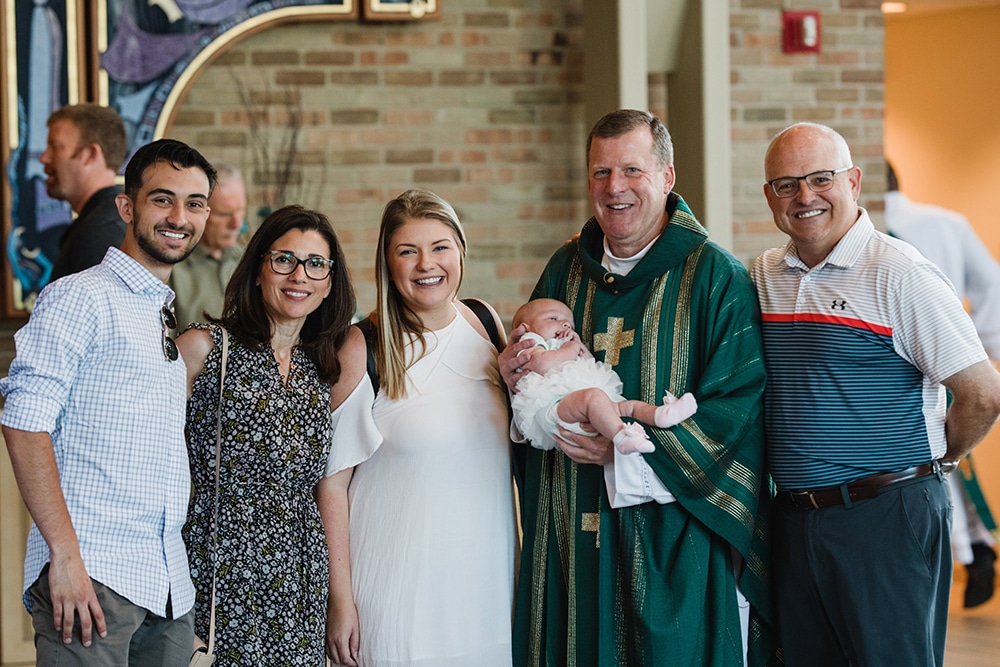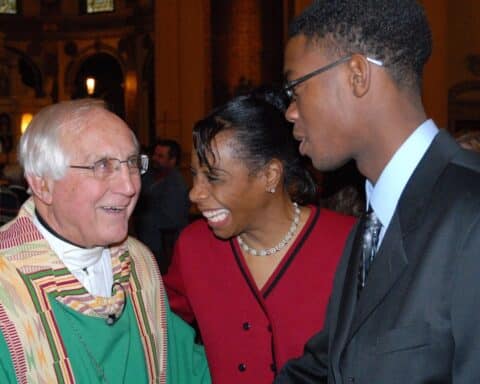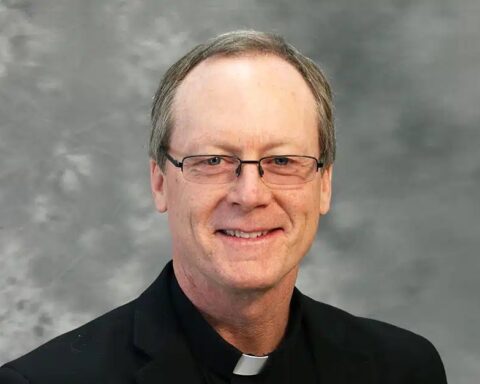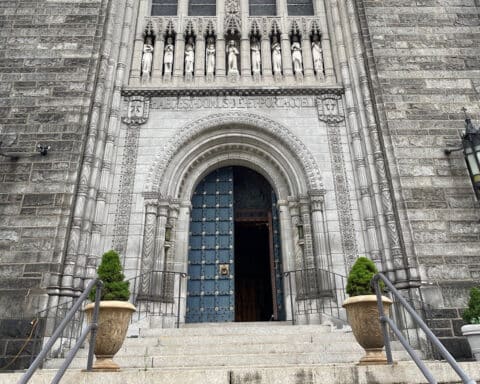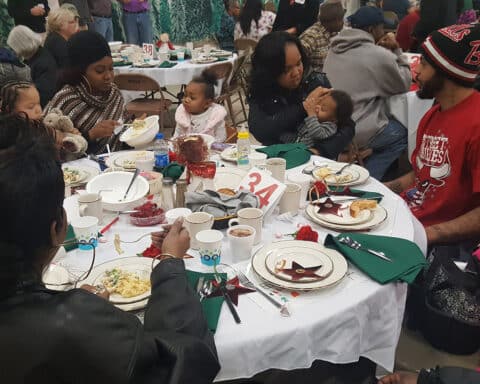DETROIT (CNS) — Over the next two years, the Archdiocese of Detroit will transition to a new pastoral and governance model for its 218 parishes called “families of parishes,” Archbishop Allen H. Vigneron announced May 31, the feast of Pentecost.
Calling it a “very important step in the life and mission of our local church,” he said the move will allow parishes to more robustly serve their mission while proactively responding to historic challenges that have been exacerbated by the COVID-19 pandemic.
“Even before the pandemic, we knew God wanted to renew our parishes. The structures we inherited served our mission well in the past, but they need to be renewed and aligned for mission,” Archbishop Vigneron said. “And so, in prayer and in consultation with others, I’ve discerned that this is the time to respond in faith to our new reality and to better equip our parish communities for mission.”
While the health and economic crises have contributed to a reduction in material resources, the archdiocese also faces a looming priest shortage, the archbishop noted, with almost two-thirds of priests in southeast Michigan older than 60.
Many of these priests care for one or multiple parish communities as they approach — or even exceed — retirement age, a burden that if left unchecked would quickly become unsustainable, the archbishop said.
In the new “family of parishes” model, multiple priests and deacons would be assigned to care for a group of three to six parishes, alleviating some administrative burdens and allowing parishes to more closely share human and material resources and talents.
“Over the next several months, groups of clergy and lay faithful will help me discern the leadership and governance structure of the families of parishes and the ways in which this new structure will help all our parishes become vibrant posts of missionary activity,” the archbishop said.
In a prerecorded video message aired before his livestream Mass from the Cathedral of the Most Blessed Sacrament, Archbishop Vigneron reflected upon the “missionary journey” of the archdiocese, beginning in 2014 with a Year of Prayer and followed by the historic 2016 synod, which resulted in the publication of his pastoral letter “Unleash the Gospel” on the eve of Pentecost three years ago.
Since then, the archbishop has given an informal “state of the church” address each year at Pentecost, sharing new insight and direction into the local church’s progress.
Last year, the archdiocese embarked on a plan to renew its parishes and schools through an initiative called “Sent on Mission,” an effort to align all resources to better serve the mission of evangelization.
That effort “continues to be our mission today, even now in the midst of a historic pandemic,” Archbishop Vigneron said.
While evangelization continues to be the focus, the COVID-19 crisis has accelerated the need to rethink how parishes are structured for mission, the archbishop said.
“We are not the same diocese we were six years ago when we began this journey. God has been at work in us, in our communities, in our parishes, and in our schools. We have learned to be more docile to the Holy Spirit. We have learned to walk with apostolic boldness and confidence in God,” Archbishop Vigneron said. “We are committed to working in a spirit of innovation and collaboration. And most importantly, we have resolved to place Christ and his mission above all else.”
Between now and Advent, appointed teams of clergy and lay leaders will pray, discern and discuss different options for leadership and governance models for parish families, some of which have been successfully modeled by other dioceses, including neighboring London, Ontario.
At Advent, the groups of parishes that will form each family will be announced, and the first wave of parish families will begin operating by July 2021. The archbishop also announced the creation of a new website, familiesofparishes.org, where the faithful can learn more about the plans.
At their core, parish families will be groups of parishes — generally three to six — that share human and material resources in a spirit of collaboration.
Different from the traditional model of merged parishes, each parish in a “family” would retain its own canonical identity, but share a leadership team that may include priests, deacons, pastoral ministers and other parish staff.
In a merged parish or a parish cluster, one priest might be responsible for multiple communities, which can contribute to clergy burnout and isolation, while in a parish family, multiple priests and deacons would work in tandem to administer and serve the spiritual and sacramental needs of the faithful in each of the parishes in the family.
“Experience in our diocese and other dioceses has shown that (the merged or clustered parish) model is quite hard on the priests and ultimately leaves the parishioners feeling as if they do not have the support that they want and need from clergy,” according to an FAQ document accompanying Archbishop Vigneron’s announcement.
Given the shrinking number of available priests — as of 2018, the average age of the Archdiocese of Detroit’s 382 diocesan priests was 63.6 — the coronavirus crisis threatens to worsen the problem, especially if older priests who are more at risk of infection become ill or opt to retire early out of health concerns.
Even if the number of available priests and the number of parishes remain the same, having multiple priests share responsibility for each parish in the “family” allows clergy to lean on one another to a greater extent, exercise their unique ministerial gifts more effectively, and creates closer fraternal bonds between both clergy and the parishes they serve.
The archdiocese will not ask any parish to merge or close worship sites as a result of the Advent announcement, but “after a careful and honest review of existing resources,” the resulting parish families “may opt to close worship spaces or merge with partnering parishes.”
The transition to families of parishes is “not a change in our aims,” Archbishop Vigneron said, but a change in strategy.
“Families of parishes is our way to live the call of the Spirit we heard at the (archdiocese’s) Synod 16, which called for a complete renewal of structures to make them radically mission-oriented and Spirit-filled,” he said.
“Above all, let us pray for love,” he said. “Because without love, every effort to be on mission is nothing more than sounding brass or a tinkling bell. Love is the motive for our mission and the message we carry in our mission: that love has triumphed over death in the rising of Jesus Christ and that Jesus offers this triumphant love to us so that we can be with him forever.”

